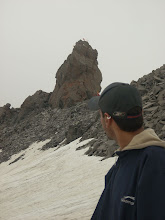 Mandi
Mandi district of today is the conglomeration of mainly Mandi and suket states of the past .the river Beas flowing first roughly from east to west and then in north westerly direction is the principal river of the district .the district is no less to Tibetans and they call it zahor because of the interesting association with the great Buddhist teacher and missionary , Padmasambhava , (750-800AD) for he went to Tibet from here to preach the doctrine of Buddhism at the request of the Tibetan King.
Mandi town itself (760m) is a very old town built around a sunken garden, first of its type in this site of the country. old bazaar, and exquisitely sculpted stone temples of panchvaktra, ardhnarishwar, triloknath and boothnath attract the eyes of beholder .shaymakali temple at Tarna hills is a 17th century shrine and its town .Mandi has one of the oldest degree colleges in the state and a big play ground ‘padddal’ in front of it .the festival of ‘SHIVRATRI, and a football tournament during rains are the great attractions of the town when puddle hum with activities.
Boothnath temple (760m): this temple is in the midst of the town. Its construction in
‘Shikhar style’ was started by raja Ajbar Sen in the year1527 in which Mandi also started coming up.
Shayma kali temple (850m): Raja Shayam Sen (1664-79) got temple of goddess kali built on a hill top of Tarna hill. Beside the majestic idol of kali, the surroundings of the temple are easy on the eyes
Wander Away From MandiRewalsar Lake (1360):
This lake, is 24 km away from Mandi town, rest on mountain spur and is protected by dense vegetation. Tiny island of reed float over the waters here. Hindu, Sikhs &Buddhist hold the place sacred alike. Guru rim poche, padhmasambhava, lived here and went to Tibet from here to start mahanay Buddhism in Tibet at the invitation of the Tibetan king. Guru Govind Singhji stayed here for a month in 1738 and raja Joginder sen got built Gurudwara here in 1930 .there are three Hindu temples here dedicated to Krishna, Shiva and Rishi lomas.
Parashar Lake (2730 m):
This beautiful lake with deep blue waters is 46 km way from Mandi and considered sacred because Rishi Parashar had mediated here. A three tire pagora –like temple dedicate to the Rishi against the background of snow draped peaks is attractive.
Joginder nagar (1220m):
A town 50 km away from Mandi is an ideal for a quiet holiday in the hotel of hptdc. It is the access point for 40 km away Barot where one can fish for trout in the water of river uhl and visit nagru wild life sanctuary. Not to miss is an herbal museum and a herbal green maintained by the department of Indian system of medicine and homeopathy.
Sundernagar (1174m):
It used to be the capital of suket state and is hardly 24 km away from Mandi towards Shimla .the waters of Beas Satluej project have given it a man made lake .the temple of mahamaya and suket vatika on the near by hills are other attractions.
Janjheli (2200):
The unspoiled village of Janjheli could be the starting point for various treks. It is only 67 km away from Mandi.
Jhatinagri (2130):
12 km from jogindernagar, it is a place surrounded by thick forest .the remains of the dwelling of the former ruler of Mandi are here. A PWD rest house looks after the comforts of tourists.
Barot (1830):
It is a quiet place 40 km away from Jogindernagar via jhantingari and 12 km by haulage trolley .the reservoir on river uhl for hydel power station at Jogindernagar adds to its charm.
Shikari Devi temple (2850m):
It is a temple without roof .all attempts to cover the goddess with roof have failed .a trek to this ancient shrine is enchanting.






